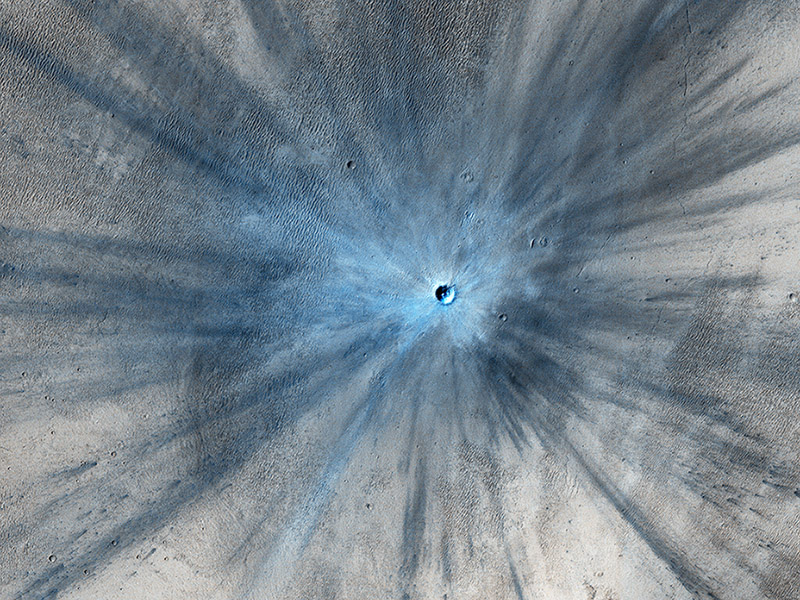
Credit: NASA/JPL-Caltech/Univ. of Arizona
The crater spans approximately 100 feet (30 meters) in diameter and is surrounded by a large, rayed blast zone. Because the terrain where the crater formed is dusty, the fresh crater appears blue in the enhanced color of the image, due to removal of the reddish dust in that area. Debris tossed outward during the formation of the crater is called ejecta. In examining ejecta’s distribution, scientists can learn more about the impact event. The explosion that excavated this crater threw ejecta as far as 9.3 miles (15 kilometers).
With nearly 4 meter crater impacts on Mars occurring over 200 times a year this makes for a interesting way of life for humans on mars. It’s bad enough to deal with the extreme surface environment on Mars let alone falling debris from a impact. I wonder if a early warning system could be set up.
-
Impacts like this are high value lander destinations.
-
I wonder how Mars' impact rates compare to Earth's.
-
Based on size it doesn't look good
-
I would have to agree with the bunker/bomb-shelter approach. (n/t)
-
I would have to agree with the bunker/bomb-shelter approach. (n/t)
-
Based on size it doesn't look good